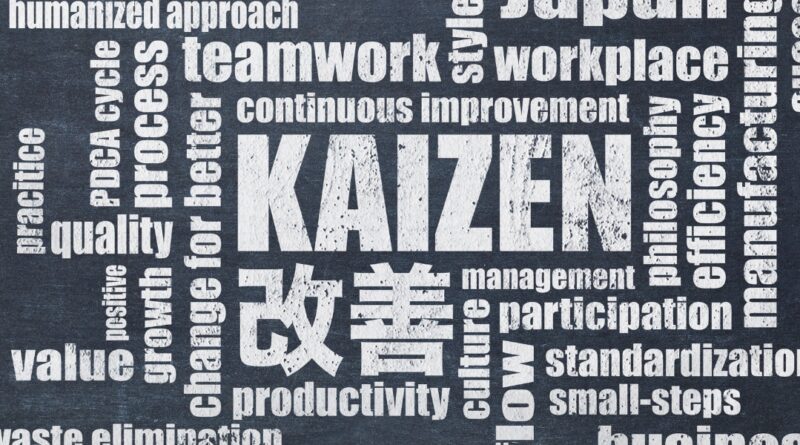In the realm of personal growth, professional development, and organizational success, Japanese philosophies of continuous improvement stand as timeless beacons of wisdom. Rooted in ancient traditions and refined through centuries of practice, these philosophies offer profound insights into the pursuit of excellence, the cultivation of resilience, and the relentless quest for progress. From the legendary Kaizen principle to the profound teachings of Ikigai, each philosophy serves as a guiding light, illuminating the path towards mastery, innovation, and sustainable success.
- Kaizen (改善):
At the heart of Japanese philosophy of continuous improvement lies Kaizen, which translates to “change for the better.” This principle emphasizes the relentless pursuit of small, incremental improvements in all aspects of life and work. By focusing on continuous refinement and optimization, individuals and organizations can achieve significant progress over time. - Ikigai (生き甲斐):
Ikigai is a concept that encapsulates the intersection of one’s passion, mission, vocation, and profession. It represents the pursuit of purpose and meaning in life, guiding individuals towards activities that bring them joy, fulfillment, and a sense of purpose. By aligning their actions with their Ikigai, individuals can cultivate a deep sense of satisfaction and fulfillment. - Wabi-Sabi (侘寂):
Wabi-Sabi celebrates the beauty of imperfection, impermanence, and authenticity. It encourages individuals to embrace the natural cycles of life, appreciate the beauty in simplicity, and find joy in the flawed and fleeting aspects of existence. By embracing Wabi-Sabi, individuals can cultivate a deep sense of gratitude, acceptance, and inner peace. - Kintsugi (金継ぎ):
Kintsugi is the Japanese art of repairing broken pottery with gold or silver lacquer, highlighting the cracks as a symbol of resilience, strength, and beauty. This philosophy teaches individuals to embrace their scars and imperfections, transforming adversity into opportunities for growth and transformation. - Shuhari (守破離):
Shuhari is a concept that describes the stages of mastery in traditional Japanese arts, martial arts, and craftsmanship. It consists of three stages: Shu (follow), Ha (break), and Ri (transcend). By progressing through these stages, individuals can deepen their understanding, develop their skills, and ultimately transcend limitations to achieve mastery. - Gemba (現場):
Gemba refers to the “real place” or the “actual site” where value is created in organizations. This philosophy emphasizes the importance of going to the source, observing processes firsthand, and engaging with frontline workers to identify opportunities for improvement. By practicing Gemba, organizations can uncover inefficiencies, eliminate waste, and drive continuous improvement. - Monozukuri (ものづくり):
Monozukuri embodies the Japanese approach to craftsmanship, excellence, and attention to detail. It emphasizes the pursuit of perfection in every aspect of creation, from manufacturing to design to customer service. By prioritizing Monozukuri, organizations can deliver products and services of the highest quality, earning trust and loyalty from customers. - Nemawashi (根回し):
Nemawashi refers to the process of building consensus and laying the groundwork for change through informal discussions and consultations. This philosophy emphasizes the importance of involving stakeholders, gaining buy-in, and addressing concerns before implementing new initiatives. By practicing Nemawashi, organizations can minimize resistance to change and increase the likelihood of successful implementation. - Muda, Mura, Muri (無駄、ムラ、ムリ):
Muda, Mura, and Muri are three types of waste in Lean philosophy. Muda refers to any activity that does not add value, Mura refers to unevenness or inconsistency in processes, and Muri refers to overburden or excessive strain on resources. By identifying and eliminating Muda, Mura, and Muri, organizations can streamline operations, improve efficiency, and enhance productivity. - Hansei (反省):
Hansei is the practice of self-reflection and introspection, often conducted after completing a task or project. It involves critically evaluating one’s performance, identifying areas for improvement, and committing to personal growth. By embracing Hansei, individuals can learn from their mistakes, refine their skills, and continuously strive for excellence. - Seiri, Seiton, Seiso, Seiketsu, Shitsuke (整理、整頓、清掃、清潔、躾):
Also known as the 5S methodology, Seiri (sort), Seiton (set in order), Seiso (shine), Seiketsu (standardize), and Shitsuke (sustain) are five principles for organizing and maintaining a clean, efficient workspace. By implementing the 5S methodology, organizations can create a culture of cleanliness, organization, and efficiency, leading to improved productivity and morale. - Hansei-Kai (反省会):
Hansei-Kai is a practice in Japanese business culture that involves holding regular meetings to reflect on past performance, discuss challenges, and brainstorm solutions for improvement. These meetings provide a forum for open dialogue, constructive feedback, and collective problem-solving, fostering a culture of continuous learning and improvement. - Nemawashi (根回し):
Nemawashi refers to the process of building consensus and laying the groundwork for change through informal discussions and consultations. This philosophy emphasizes the importance of involving stakeholders, gaining buy-in, and addressing concerns before implementing new initiatives. By practicing Nemawashi, organizations can minimize resistance to change and increase the likelihood of successful implementation. - Shikumi (仕組み):
Shikumi refers to the system or framework that underpins processes and operations within an organization. This philosophy emphasizes the importance of designing robust systems and processes that enable individuals to work efficiently and effectively. By focusing on Shikumi, organizations can standardize workflows, minimize errors, and drive continuous improvement. - Hanami (花見):
Hanami is the Japanese tradition of cherry blossom viewing, which symbolizes the beauty and transience of life. This philosophy encourages individuals to appreciate the fleeting moments of beauty and joy that surround them, reminding them to cherish the present moment and find meaning in the ephemeral nature of existence.
In essence, Japanese philosophies of continuous improvement offer a holistic approach to personal and professional growth, emphasizing the importance of mindfulness, resilience, collaboration, and lifelong learning. By embracing these timeless principles, individuals and organizations can cultivate a culture of excellence, innovation, and sustainable success that transcends boundaries and inspires generations to come.








